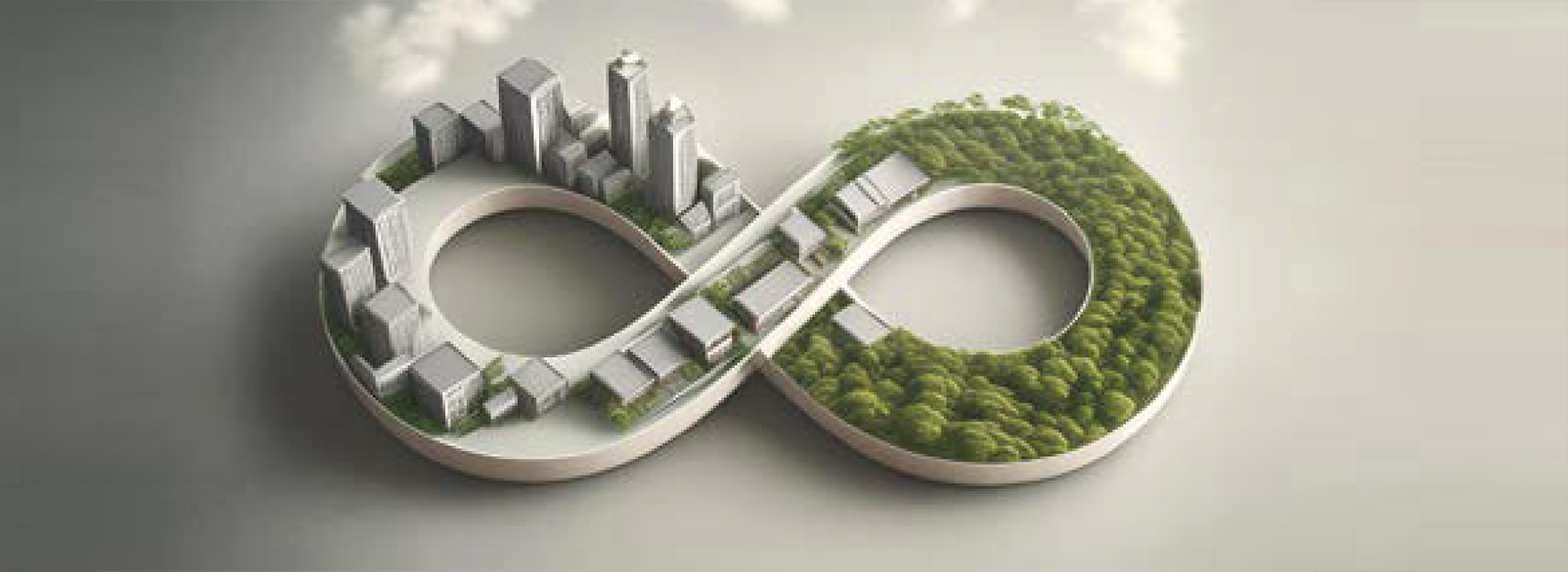ERION VISION 2050
The report provides a detailed examination of the past, present, and future of Extended Producer Responsibility (EPR) systems, emphasising their importance in achieving the EU’s sustainability and resource security goals. The report reviews EPR's evolution since the 1980s, current variations across the EU, and challenges in product design. Case studies from six EU actors highlight successes and areas for improvement. The vision for 2050 includes a unified EU approach, expanded roles for Producer Responsibility Organizations (PROs), and essential policy actions to foster a circular economy.

The 1980s marked a period of significant waste management challenges across Europe, with public entities struggling to cope with increasing consumption and the emergence of new materials. These challenges lead to the conceptualisation of EPR as a framework to address both waste management and product design. Nowadays, EPR systems cover numerous waste streams across the EU, but variations exist in their features and performance, reflecting differences in responsibility types, competition dynamics and cost coverage.
Despite EPR’s advancements in waste management, challenges persist, particularly in driving significant changes in product design to prevent waste. The current eco-modulation approach, aimed at incentivising design improvements, faces hurdles in implementation, with varying stakeholder interests and regulatory complexities. While EPR has successfully influenced packaging design, achieving similar outcomes for complex products remains challenging. Looking ahead, the future of EPR entails a shift towards better utilisation of collected materials, with a growing emphasis on reuse, repair, and recycling to foster a truly circular economy. Stakeholder cooperation, balanced competition, and effective policy incentives will be essential in driving innovation and sustainability efforts forward.
The last decades witnessed in parallel a growing material consumption and resource scarcity in Europe, as well as circularity limitations in addressing these needs. Indeed, despite circular economy efforts, more than 87% of resource consumption in the EU still relies on primary materials, and overall waste generation in the EU continues to rise. The World Bank highlights that the current “business-as-usual (BAU) policies will not suffice to achieve significant reductions in primary material use, which is expected to grow 2.5 times by 2050 compared to 2000”. Moreover, securing resources will also be an ever more pressing feat about the EU’s net zero goals, given the role of critical raw materials (CRMs) in the advancement of decarbonisation technologies. The International Energy Agency estimates that by 2030, in its Net Zero Emissions by 2050 Scenario, global Critical Raw Materials demand will grow by 3.5 times, at over 30 million tonnes.
Considering these resource challenges, the posing of EPR as a potential tool to bridge these gaps between the EU’s sustainability, resource security goals and the effective implementation of circularity models is seen as the way forward.
Different viewpoints on the journey of EPR so far and the vision of the future are presented through cases studies on six different actors across different value chains within the EU: packaging and tobacco product waste through Electrão’s PRO in Portugal, batteries through Eucobat’s broad vision and WEEE Ireland’s work, household and professional WEEE in the UK through Repic, textiles waste through FESI, the Federation of the European Sporting Goods industry and finally end-of-life vehicles (ELV) management through Volkswagen Group Italia’s circular economy initiatives.
Based on the learnings from case studies a vision for EPR in 2050 can be presented. The key elements can be summarised as follows:
- EU-focused approach: crucial for a holistic perspective and treatment efficiency across the continent, fostering a single market for recovery, high-tech treatment of materials and supply to key manufacturing sites.
- PROs' expanded role: beyond compliance to cultivating collaboration, innovation, and circular economy initiatives, promoting sustainable production, disposal and material recovery.
- feedback loop for Producers: optimising product lifecycles through design changes to enhance recyclability and stability, leveraging data analysis tools for recyclability and carbon impact. Further, offering comprehensive compliance services by PROs covering different product sectors, broadening their customer base and operational models for synergistic efficiencies.
Organisational takeaways for achieving the future EPR vision:
- wide collection networks: with dedicated outreach, ensuring comprehensive waste recovery, allowing PROs to complement local councils' efforts when challenges arise.
- holistic waste management vision, including promotion of reuse and repair, standards on refurbishment, and promoting a circular economy beyond recycling. The promotion of reuse and repair is crucial, extending the focus beyond recycling to embrace other facets of the circular economy.
- consumer engagement and incentivisation strong engagement efforts and tailored mechanisms for certain products to encourage proper disposal practices, particularly for products with longer lifecycles.
Policy actions needed for achieving the future EPR vision:
- coherent and meaningful targets, considering waste available for collection, material loops, and circular economy priorities, going beyond mere collection rate targets. Further, more rigorous enforcement of collection and recycling standards is needed, preventing material scavenging, and ensuring high-quality recycling.
- market stimulation for recycled materials: mandatory requirements for recycled content incorporation, prioritising quality over quantity in waste treatment processes.
- sustainability and eco-design considerations supporting innovation in design prioritising recyclability, sustainable production, and ease of material reintegration, navigating inherent trade-offs and harmonising design requirements.